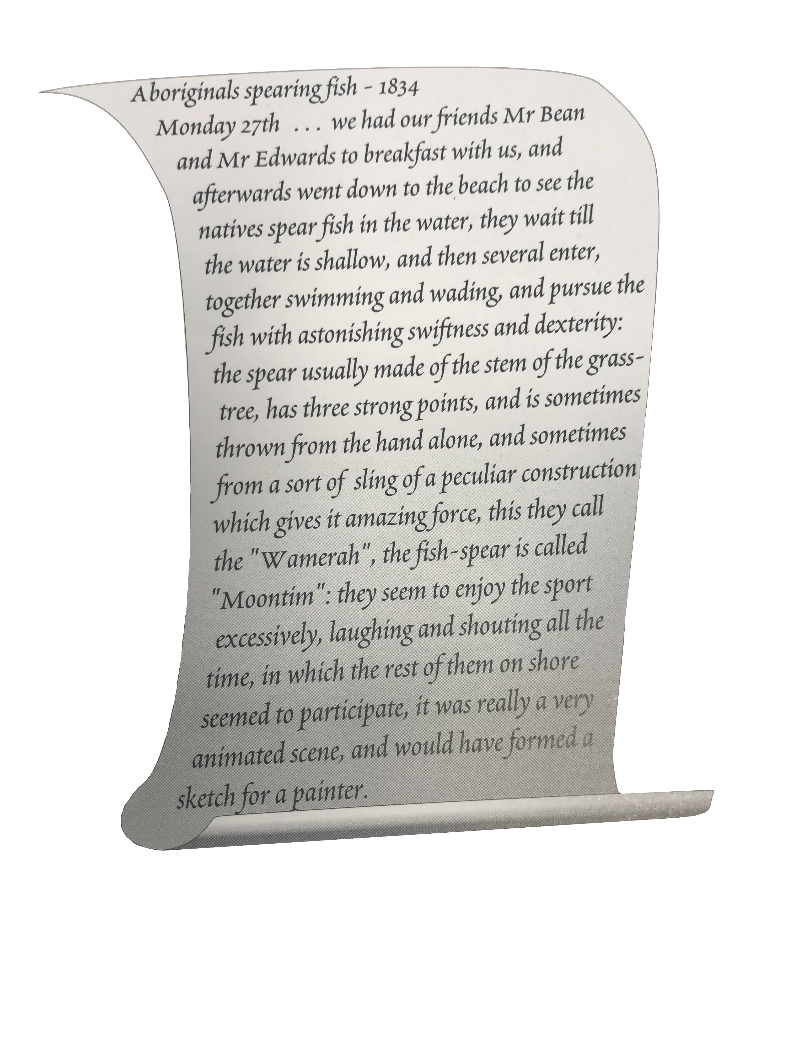The Tuggerah Lakes catchment’s Indigenous heritage is both long-lasting and captivating. The Darkinjung land is home to the Darkinjung people who have lived around the lakes dating back to Aboriginal custodianship from up to 40,000 years ago. Their rich heritage is well-documented, with artefacts such as open campsites, axe-grinding grooves, rock engravings, burial areas and stone arrangements aplenty in the area. The Indigenous trails and sites across the Central Coast are popular with tourists and locals.
The waterways have always been a focal point of the Indigenous culture. Local communities used the sites around the estuary for shelter, cultural meetings, traditional burials and hunting. To this day, they cherish the lakes as a source of food and a vital space used for recreation and teaching traditional fishing practices to the young generations.
Only Take What You Need
For Aboriginal peoples, fishing is as natural an activity as breathing. It forms a part of their deep cultural and spiritual connection to water. The Indigenous communities local to the Central Coast had relied on fishing as a primary source of food for thousands of years. As per many historical records, the local lakes, rivers and creeks were brimming with fish. Yet, the Darkinjung people fished and hunted responsibly, believing that it is essential only to take the amount of food necessary to feed the community. They fished for flathead and bream, as these were abundant and easy to catch with traps, herding and spearing techniques. Each season, they would also hunt or forage in a different area, which helped to preserve the diversity of species and prevented their extinction.
The lakes provided a vital source of water for plants and animals. Food was easily found around the lagoon and included many diverse native plant species that Indigenous people have been using for medicinal and hygienic purposes. For example, they eagerly collected Acacia longifolia, better known as Sydney Golden Wattle, which is a plant famous for its cleansing properties. Its leaves lather up when crushed and can be used as soap. Another local native plant is Melaleuca quinquenervia, commonly known as the broad-leaved paperbark. When brewed, it releases potent antibacterial, antifungal, anti-inflammatory and antiviral properties. Indigenous Australians prepared it to treat coughs, colds, congestion, headache and fever.
Wildlife Hunting
For centuries, local lakes sustained Aboriginal communities pretty well. In the upper reaches of the catchment, the waterways were used for more than just catching fish. After significant rainfall, it was customary for Indigenous people to trample the banks of rivers and creeks, making them muddy and hard to walk through. When the wildlife – mostly kangaroos and wallabies – passed by in search of food or water, they would get trapped in the mud and get hunted from there.
Birds living around the waterways were also a vital source of sustenance. Indigenous people pursued black swans and ducks nesting along the banks of Tuggerah Lakes, foraging mostly for their eggs and meat. Swans’ eggs were a delicacy and a rich source of protein. Each bird could lay around eight eggs. The locals collected them towards the end of the spring laying season. At that time, the birds started to shed old feathers and became temporarily flightless, which made them easy prey.



